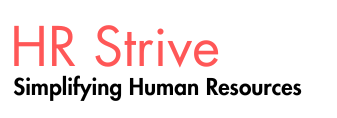In the world of HR strategy, organizational development isn’t just about fixing what’s broken—it’s about understanding how everything fits together. Like a physician examining a patient, HR professionals use organizational theories to diagnose performance issues and prescribe interventions that align people, processes, and purpose.
🧬 Why Organizational Theories Matter
Organizational theories help us decode how an organization functions—how its parts interact, where friction exists, and what needs realignment. Whether you’re using the McKinsey 7-S Framework, Kotter’s change model, or Lewin’s classic approach, the message is consistent: strategy only works when the organization is aligned.
🔑 Key Elements That Must Align with Strategy:
Structure: How teams and functions are organized and connected
Systems: The policies, processes, and technologies that guide work
Culture: Shared beliefs, values, and behaviors
Values: Principles that shape decisions and actions
Leadership: The tone and example set by those at the top
When these elements are misaligned, motivation drops, engagement suffers, and performance stalls. HR’s role is to assess these dynamics and guide the organization back to strategic health.
🛠️ OED Interventions: From Insight to Impact
Organizational Effectiveness & Development (OED) interventions are structured activities designed to interrupt the status quo and improve performance. They’re not one-size-fits-all—they’re tailored, data-driven, and strategically timed.
📊 Building the Business Case
Before launching an intervention, HR must:
Use data to illustrate the need
Define KPIs to measure success
Collaborate with internal stakeholders to set goals
Without metrics, interventions become guesswork. With them, they become strategic levers for change.
🧪 Diagnosing the Root Cause
Let’s say strategic initiatives are consistently delayed. HR investigates and finds the issue stems from departments with recent leadership changes. Further analysis reveals a weak succession planning system. The solution? A targeted program to strengthen leadership transitions—followed by a year-long review to track improvements.
This is OED in action: diagnosing, designing, implementing, and evaluating.
🔄 Types of OED Interventions
🌱 Proactive Interventions
These anticipate challenges and prepare the organization to seize opportunities. Examples include:
Flattening communication hierarchies for faster decision-making
Empowering employees with agile structures
🔧 Remedial Interventions
These address current problems and restore strategic alignment. Success is easier to measure—did the issue get resolved?
Remedial interventions can:
Boost efficiency
Reduce burnout
Improve product performance
Shift reactive habits to proactive strategies
Address budget constraints
🧩 HR’s Role: Internal Consultant & Strategic Partner
HR professionals lead OED interventions directly or collaborate with external consultants. Their deep understanding of people, processes, and performance makes them indispensable in crafting solutions that stick.
And sometimes, the intervention isn’t just for the organization—it’s for HR itself. Applying OED principles internally can elevate the HR function’s own effectiveness and strategic value.
💬 Final Thought: Theory Is the Map, Intervention Is the Journey
Organizational theories give us the blueprint. OED interventions bring it to life. When HR combines both with empathy, data, and strategic clarity, the result isn’t just change—it’s transformation.
If you’re ready to explore how these ideas could shape your next blog series, carousel post, or even a workshop outline, I’d love to help you build it out. Let’s keep the momentum going.

No comments:
Post a Comment